- Things to do
- Eat & Drink
- Music
- Pro Sports
- Getting Around
- Shopping & Services
- Hotels
- Arts & Culture
- Tours
- What’s Happening
Browse by category
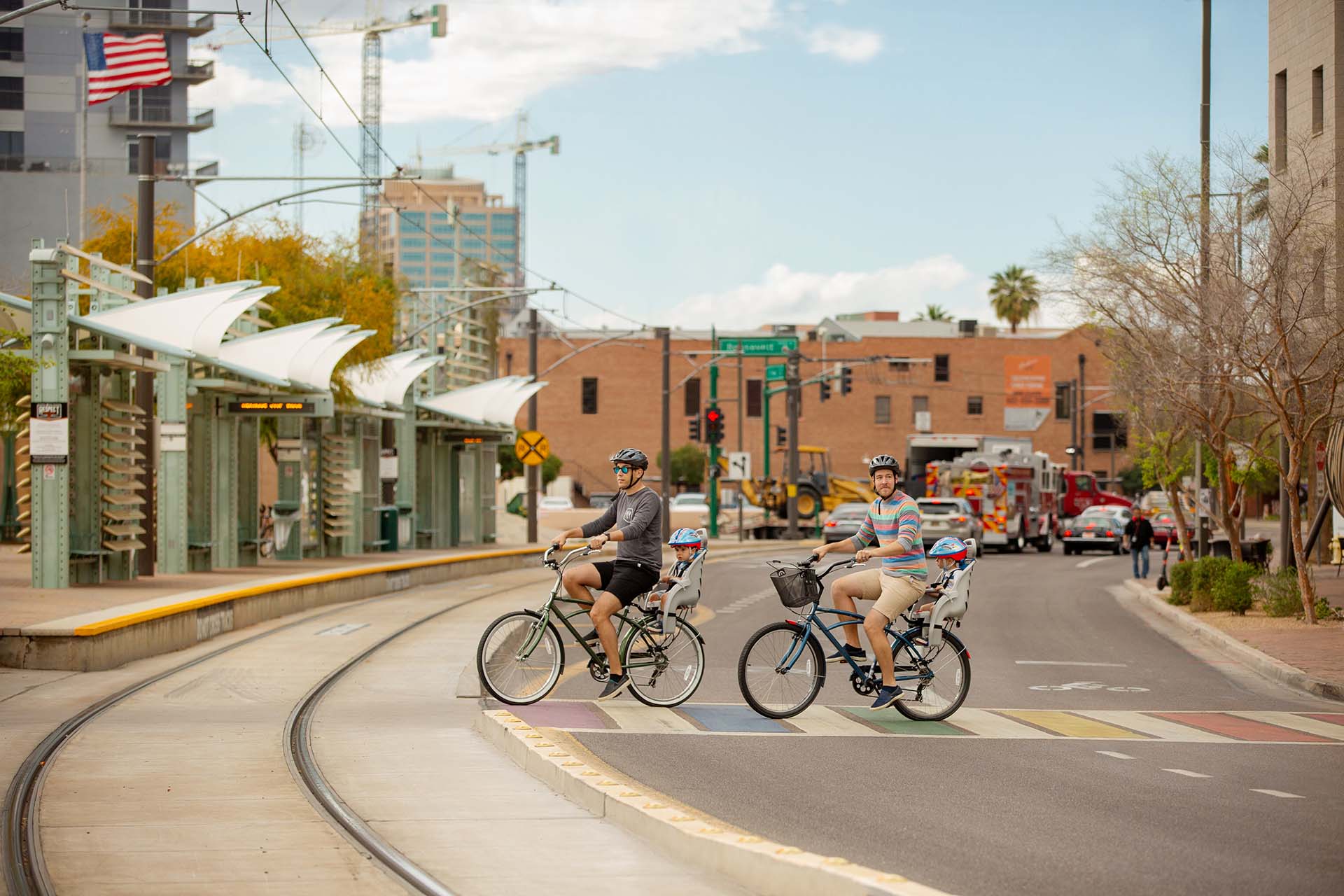
Much of Phoenix’s LGBTQ+ history is centered around the Roosevelt Row area, and while some of the buildings may be gone, the memories will last a lifetime. (Photo: Jill Richards)
June is LGBTQ+ Pride Month, which commemorates the Stonewall riots of 1969. Named for the Stonewall Inn, an LGBTQ+ club in Greenwich Village, a massive rebellion started after New York City police raided the club during the early hours of June 28, 1969. This ignited subsequent riots, protest, and marked the beginning of the LGBTQ+ civil rights movement.
Though not the first LGBTQ+ uprising, it was a tipping point in the United States. These events happened because the marginalized LGBTQ+ community was fed up with lifelong persecution and harassment. Arizona was not exempt. Throughout our history, the local LGBTQ+ community has been impacted by political persecutions, life-altering arrests, and the denial of basic civil rights.
As we continue our journey toward equality, and celebrate Pride, let’s take a look at a few Downtown Phoenix sites and events that are part of our LGBTQ+ history.
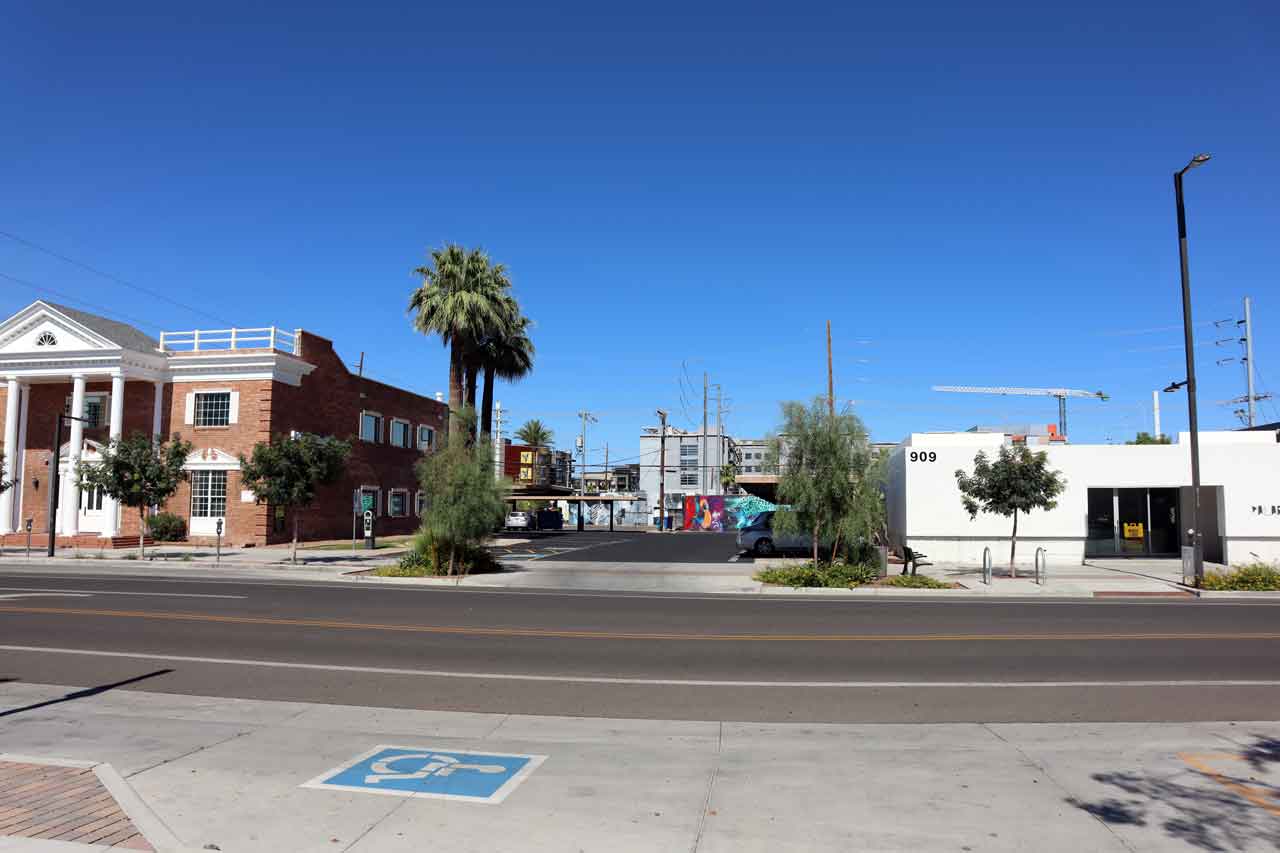
The Eighth Day Coffee House raid wasn’t a unique event. During the ’60s and ’70s, it was part of a legitimized and concerted effort on the part of Phoenix Police to seek out and arrest members of the LGBTQ+ community. (Photo: Marshall Shore)
This empty lot was once the location of the Eighth Day Coffee House. Early on a Sunday morning in 1964, a dozen officers raided this LGBTQ+ social club arresting more than 20 people, with charges ranging from lewd and lascivious acts to drunk-and-disorderly conduct. Their names were printed in the newspaper, jobs were lost, families and careers were destroyed.
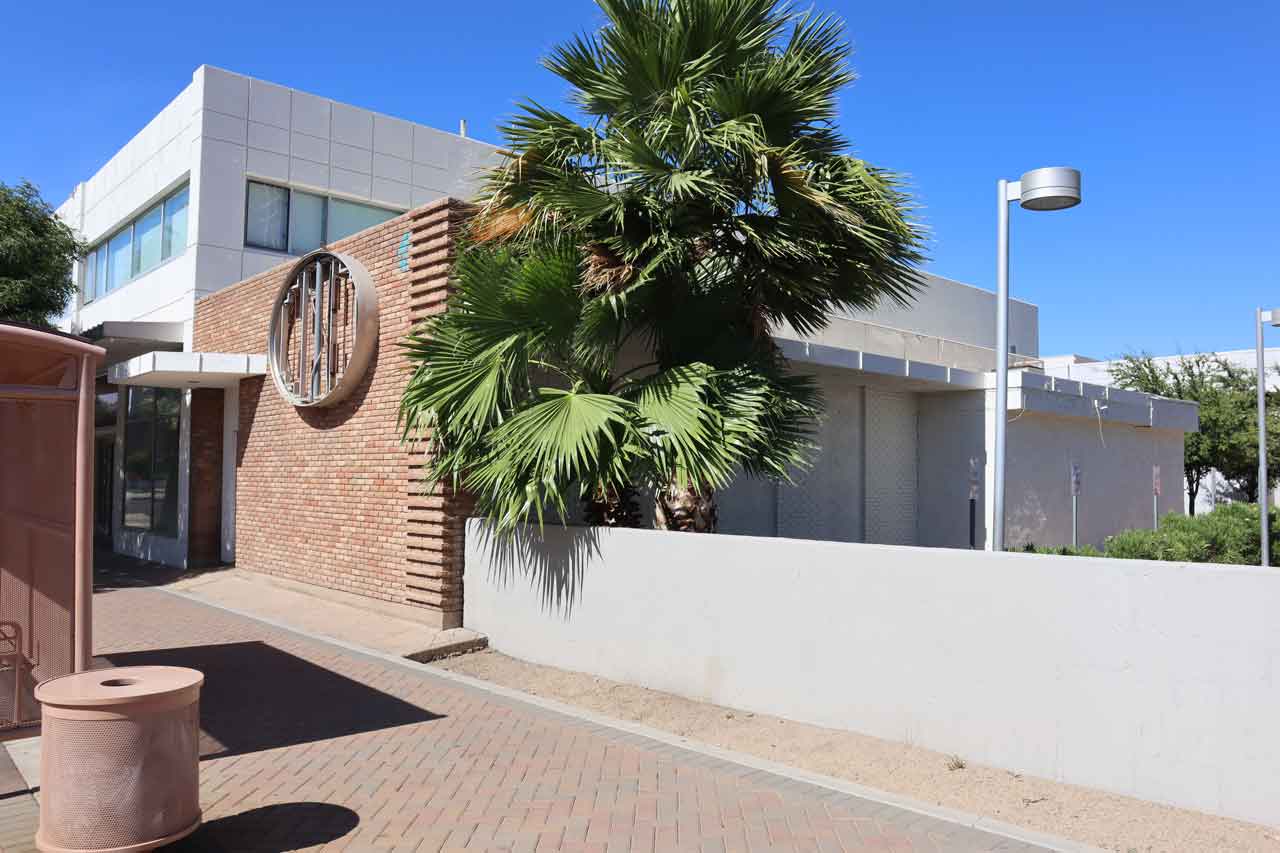
An LGBTQ+ bar, Cruisin’ 7th (now located on Seventh Street) used to be called Cruisin’ Central. It opened in 1977 in this spot just north of Roosevelt Street and Central Avenue (the location is still unoccupied). The bar moved to its current location in 2003. (Photo: Marshall Shore)
Cruisin’ Central opened its doors in 1977. The alley behind the building was the main entrance into the bar that attracted a diverse clientele.
Hip Historian Fun Fact: the Transgender Pride Flag was designed in Phoenix.
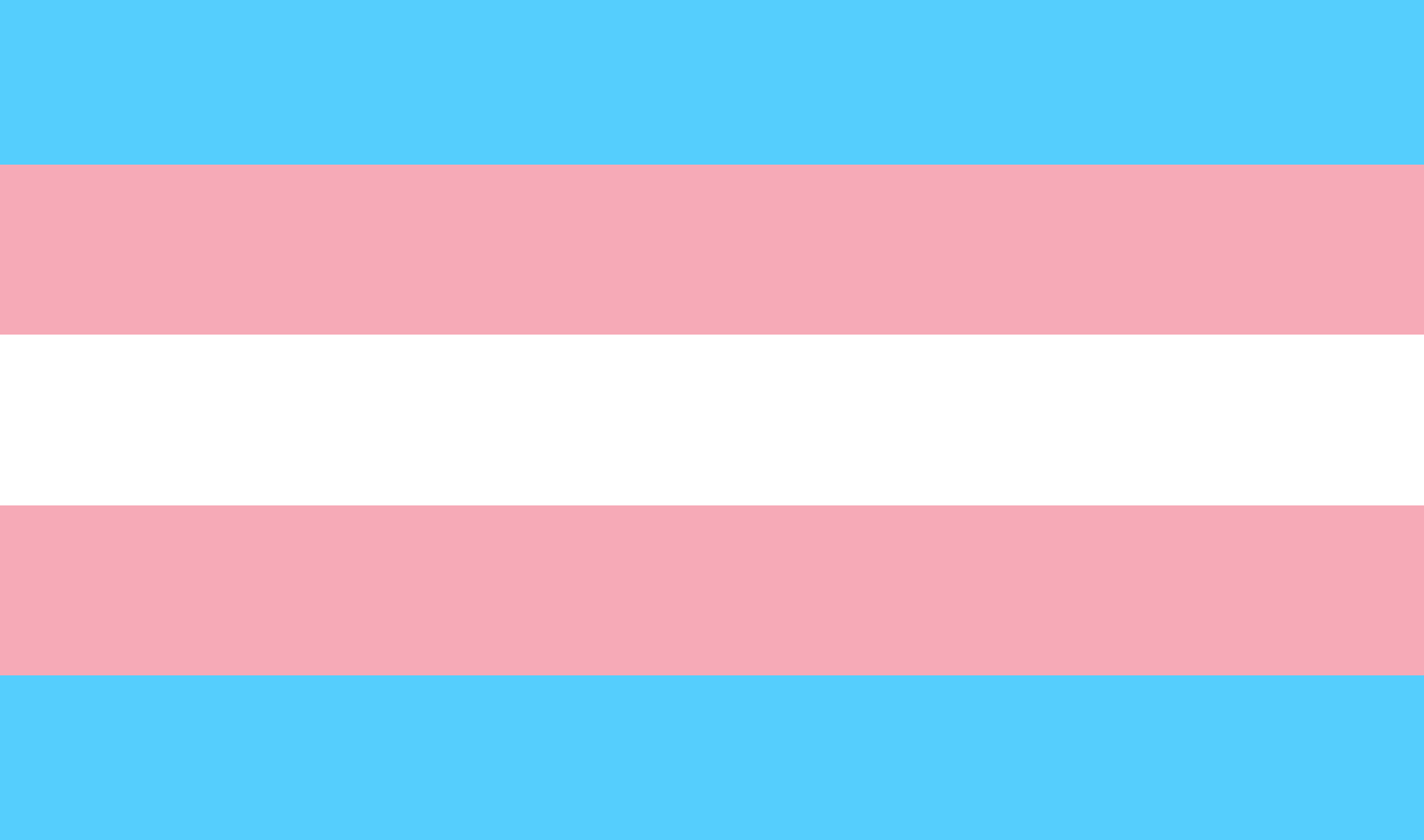
In 1999, Monica Helms designed the Transgender Pride Flag at her central Phoenix home near Indian School Road and Third Avenue. It has since been used and adopted around the globe.
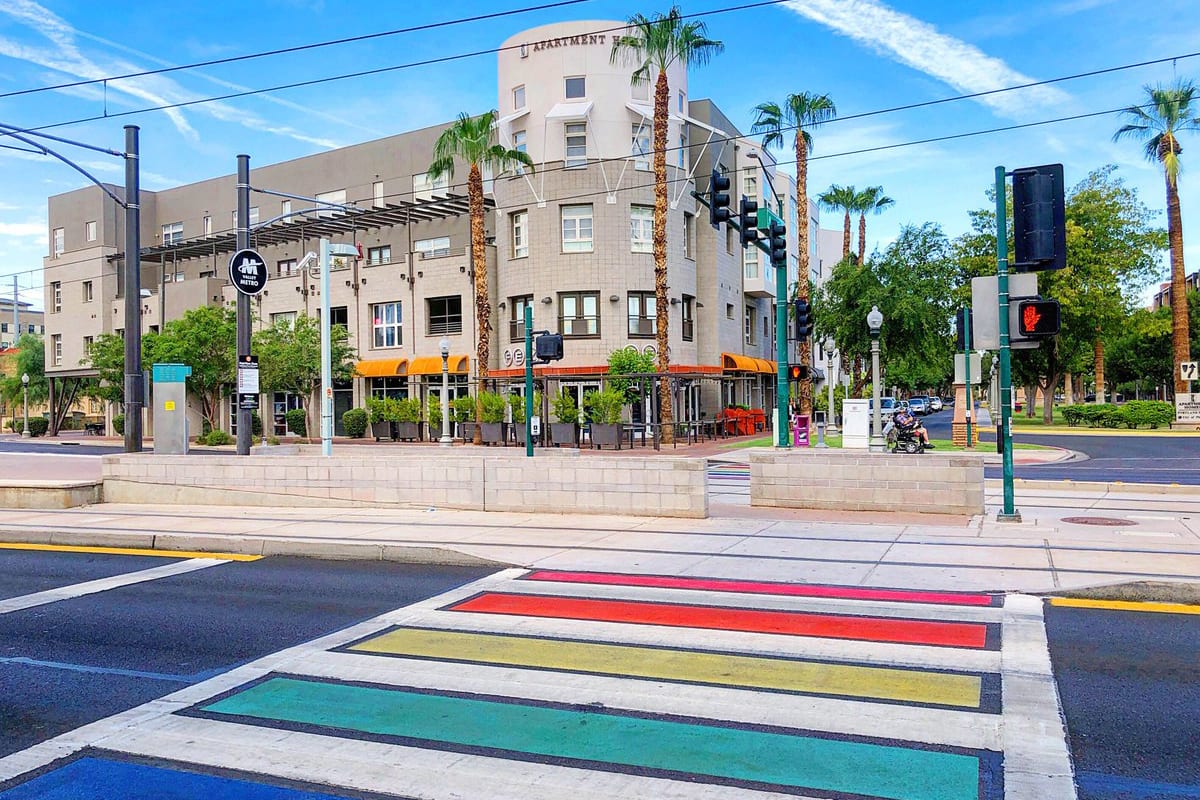
Phoenix City Council approved two rainbow crosswalks (including this one at Portland and Roosevelt streets) in April 2018. They were funded by Phoenix Pride Community Foundation, One-N-Ten and Aunt Rita’s Foundation. (Photo: Broadstone Arts District, now Green Leaf Arts District)
Unveiled the summer of 2018, and one of two in Phoenix, the Rainbow Crosswalk effort was organized by Phoenix Pride and other LGBTQ+ non-profits. It highlights the history of Roosevelt as the first Phoenix gayborhood, and to this day, the neighborhood is home to One-N-Ten, Aunt Rita’s Foundation, the Parsons Center for Health and Wellness, Southwest Center and several other LGBTQ+ friendly organizations.

A circuit of gay bars, drag clubs, and LGBTQ+ inclusive spaces along Roosevelt and Portland streets came to be known as “The Fruit Loop,” an area steeped in colorful queer history. (Photo: Marshall Shore)
A circuit encompassing Roosevelt, Third, Portland and First streets, “The Fruit Loop” was a popular place for men looking for male companionship, and was active from the mid-40s to the mid-90s.
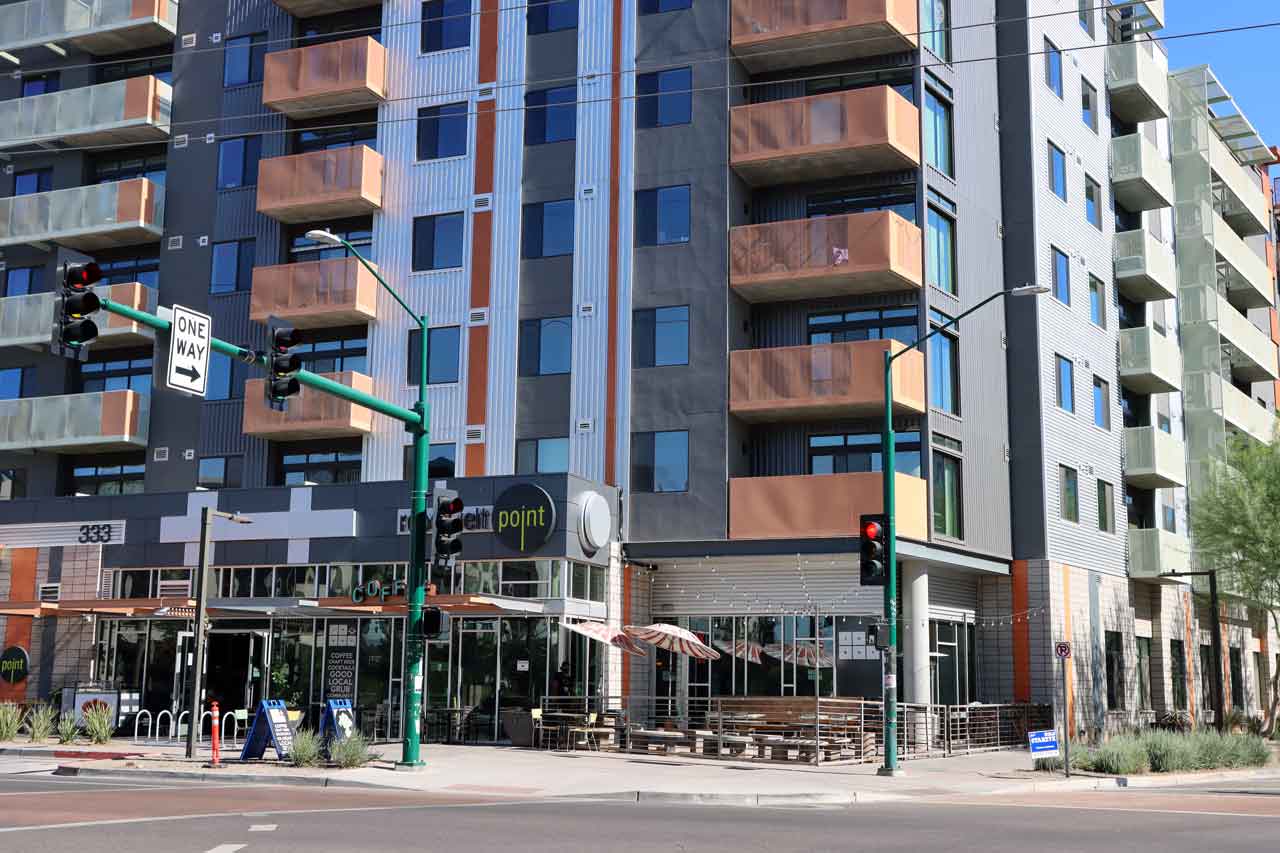
The original site of the 307 Lounge, it is now Roosevelt Point apartments. (Photo: Marshall Shore)
The 307 Lounge opened in the ‘40s, but a fire in the early ‘50s forced it to close and relocate down the street.

Formerly the Greenhaus Gallery + Boutique and home to famous DeGrazia murals, Lauren Lee’s “Three Birds” mural, and a place of LGBTQ+ historical significance as the 307 Lounge, the building was razed in 2016. It is now Ilumniate Apartments. (Photo: Marshall Shore)
The 307 name stuck through the decades and several owners. Look down at the plaque commemorating the 307 for being a watering hole on The Loop. The building was also famous for several DeGrazia murals, painted early in his career during the ‘50s. After the building was purchased for redevelopment, the DeGrazia Museum came from Tucson to preserve a small mural. Sadly it crumbled, and all were lost with the demolition of the building.
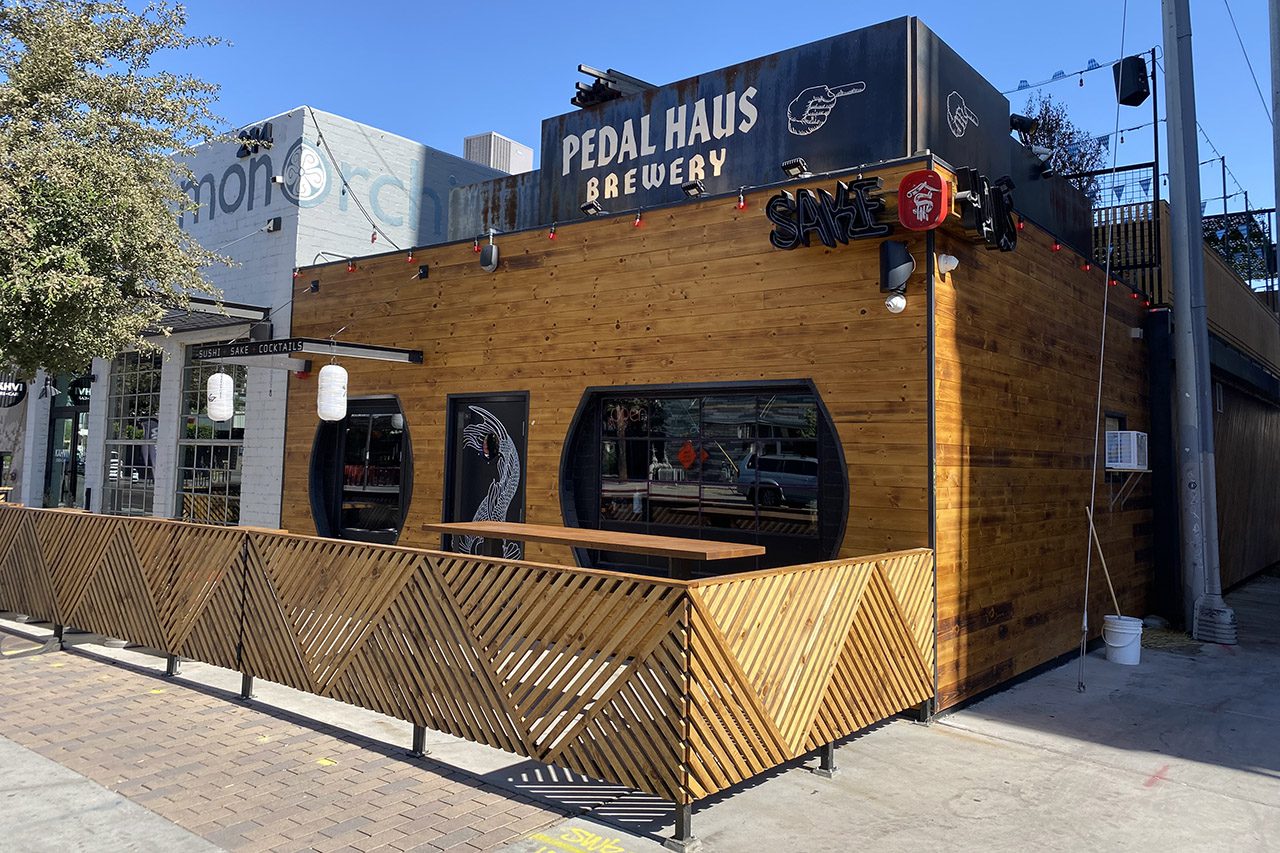
The 307 Lounge drag performers used a separate, small brick building on the west side of the alley as their dressing room, which was home to The Dressing Room restaurant until 2020. Sake Haus now operates in the old Dressing Room space. (Photo by Taylor Costello)
The 307 was a small bar and lacked a dressing room. Beginning in the early ‘70s, it began hosting regular drag shows. The performers would use the space pictured as their dressing room, running through the alley, and bursting in the side door to perform.
A few entertainers still performing around town appeared on the 307 stage: Pussy Le Hoot, Barbara Seville and Celia Putty. At The Pemberton restaurant, retail and art collective just down the street, you’ll find a 20-foot tall dress form covered in 10,000 LED lights named “Tish.” It commemorates Tish Tanner, a larger-than-life drag performer at the 307.
*This story was originally published in June 2020, and updated in 2022.
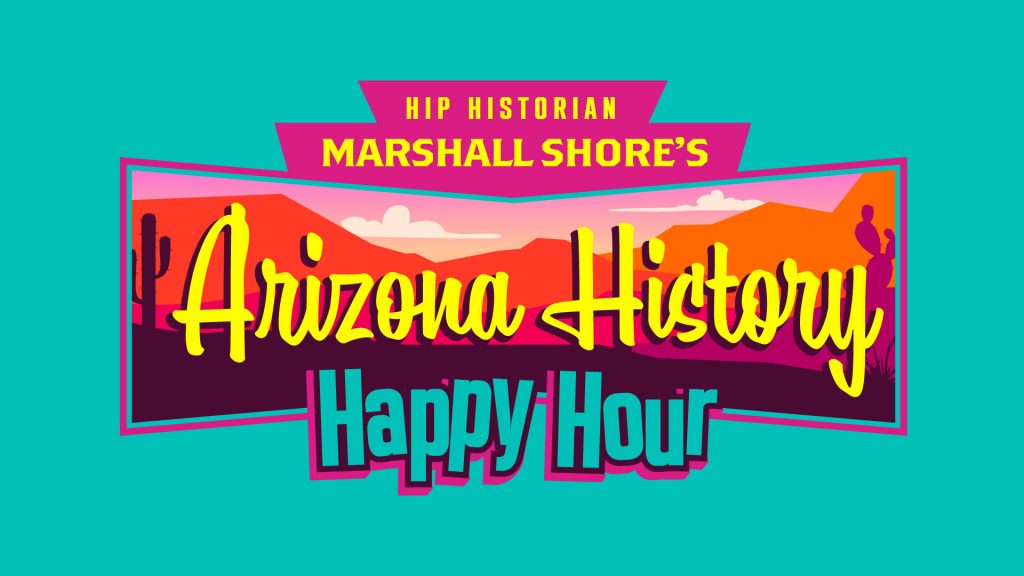
Every Thursday at 7 p.m., join Marshall Shore virtually as he shares interesting pieces of trivia about Arizona’s history online to fans and aficionados over Twitch.